Norway - 100 kroner
Norway - 100 kroner - 2017 - P54a
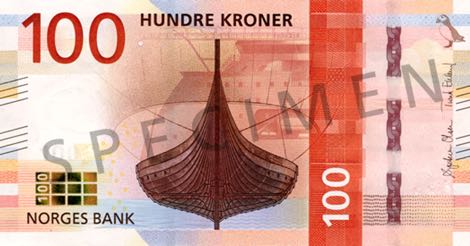
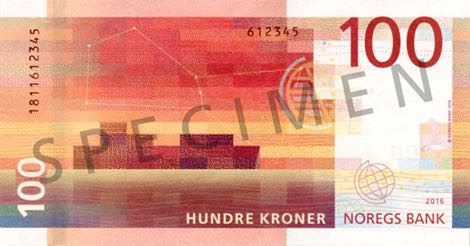
This orange-red banknote measures 70x133 mm. On the front we can see the Gokstad ship. The back shows a cargo ship and shows the constellation of Orion.
Norway - 100 kroner - 2017 - P54a


This orange-red banknote measures 70x133 mm. On the front we can see the Gokstad ship. The back shows a cargo ship and shows the constellation of Orion.
Norway - 50 kroner - 2019 - Pnew
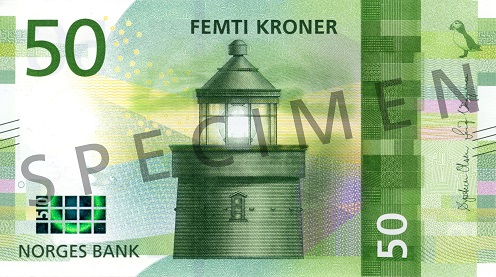
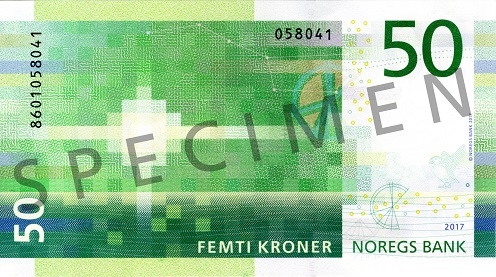
The primary motif on the 50-krone note is based on Utvær Lighthouse in Solund municipality. This lighthouse was built in 1900 and is Norway's westernmost point. The pattern on the reverse side of the 50-krone note represents a light signal from a lighthouse. The wind is light, symbolised by the short rectangular shapes and gentle waves in the organic pattern. You can also see the constellation Ursa Major and the nautical chart symbol showing the divisions between the light sectors of a lighthouse.
Bangladesh - 70 taka - 2018 - PNL
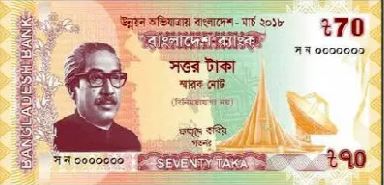

On this new note from Bangladesh we can see the Betbunia Satellite Center on the front and the Bangabandhu-1 Satellite on the back. This will be the first satellite of Bangladesh, scheduled to be launched in April 2018 from Cape Canaveral on top of the Falcon 9 rocket from SpaceX.
Russia - 2,000 rubles - 2017 - PNL
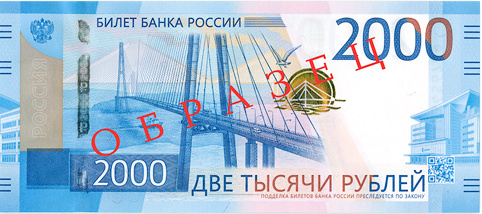
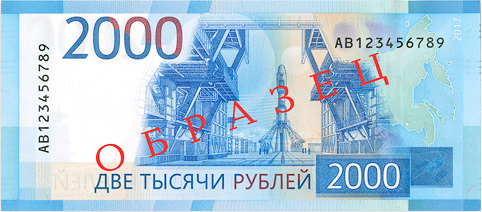
This newly announced banknote has Spaceport "Vostochny" on the back as well as a rocket. The Vostochny Cosmodrome is a Russian spaceport under construction on the 51st parallel north in the Amur Oblast, in the Russian Far East. When completed in 2018, it is intended to reduce Russia's dependency on the Baikonur Cosmodrome in Kazakhstan. The first launch took place on 28 April 2016. My guess is that the rocket shown on the banknote is the Soyuz-2 rocket which was launched that day.
Scotland (Royal Bank of Scotland) - 10 Pound - 2017 - PNL
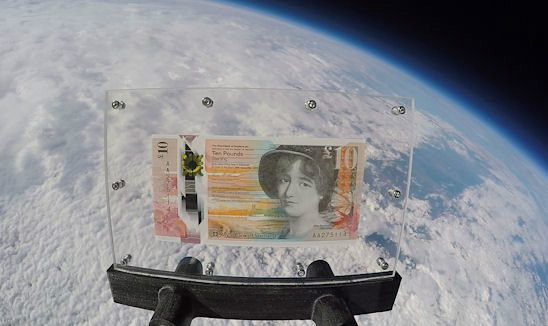
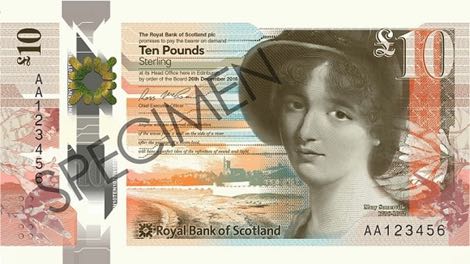
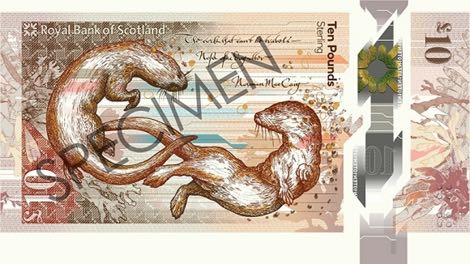
The Scottish note features the Scottish scientist and astronomer Mary Somerville. Mary Fairfax Somerville (26 December 1780 – 29 November 1872) was a Scottish science writer and polymath. She studied mathematics and astronomy, and was nominated to be jointly the first female member of the Royal Astronomical Society at the same time as Caroline Herschel. When John Stuart Mill, the British philosopher and economist, organised a massive petition to Parliament to give women the right to vote, he had Mary put her signature first on the petition. When she died in 1872, Mary Somerville was hailed by The Morning Post as "The Queen of Nineteenth-Century Science".
The launch of the new note has been quite spectacular because in honor of Mary Somerville the note was launched not only into circulation but also into space by the Royal Bank of Scotland!
India - 2,000 rupees - 2016 - PNL
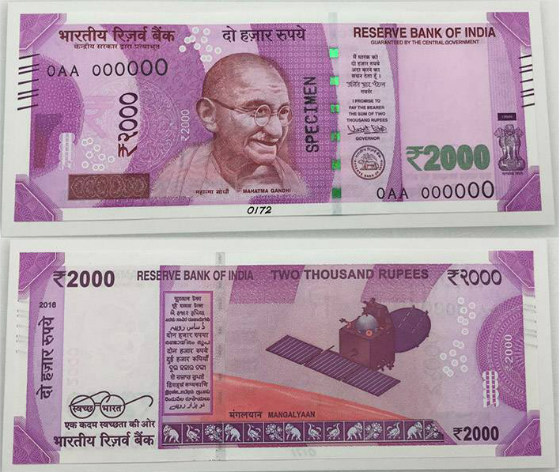
The front of the note shows the familiar face of Mahatma Ghandi. The back shows the Mars Orbital Mission (or Mangalyaan) space probe launched by the Indian Space Research Organisation in 2013 and orbiting the planet Mars.
China - 100 yuan - 2015 - PNL
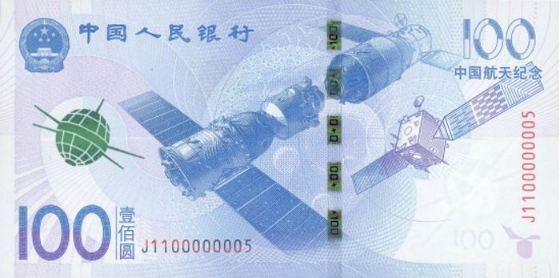
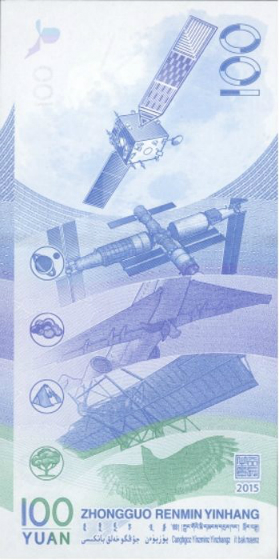
The front of the note depicts the Shenzhou 9 spacecraft docking with the Tiangong 1 space station, which occured on 18 June 2012. To the left we can see the Dongfanghong 1, China's first satellite launched in 1970. On the right side is the Chang'e 1 lunar-orbiting spacecraft. The back of the note shows a sort of ladder with the different stages of flight, starting at the bottom with a bird, above that an early plane by Chinese aviation pioneer Feng Ru. Next we have a fighter jet, then the future Tiangong 3 space station which will be launched in 2020 and at the top we see the Chang'e 1 lunar-orbiting spacecraft again.
Iran - 50,000 rial - 2015 - PNL
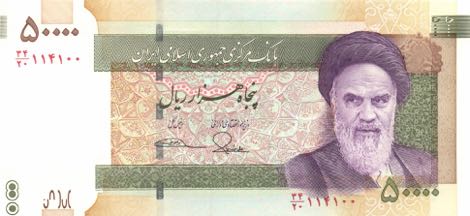
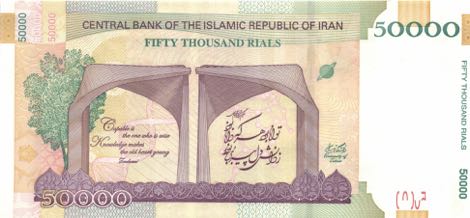
On the back it shows a tree next to the entrance to Teheran University. In the background we can make out the famous double-helix structure of DNA. The poem reads: "Capable is / the one who is wise / Knowledge makes / the old heart young" by Ferdowsi and we see the planet Saturn.
Iraq - 250 dinar - 2003-2004 - P91
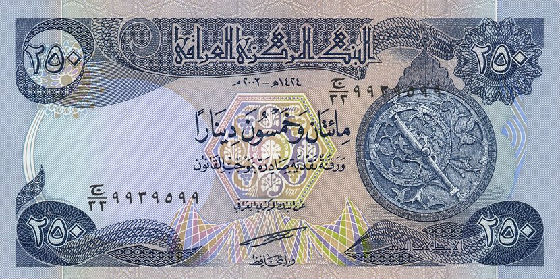
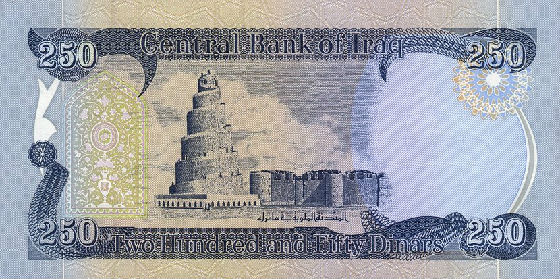
This note from Iraq shows an astrolabe on the front.
Serbia - 2,000 dinara - 2011 - P61
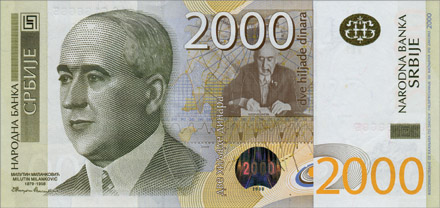
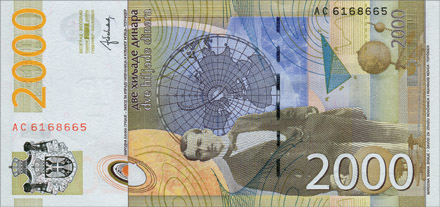
This note shows the Serbian mathematician, astronomer, climatologist, geophysicist, civil engineer, doctor of technology, university professor and popularizer of science Milutin Milankovic (1879 - 1958).
Milankovic gave two fundamental contributions to global science. The first contribution is the "Canon of the Earth’s Insolation", which characterizes the climates of all the planets of the Solar system. The second contribution is the explanation of Earth's long-term climate changes caused by changes in the position of the Earth in comparison to the Sun, now known as Milankovitch cycles. This explained the ice ages occurring in the geological past of the Earth, as well as the climate changes on the Earth which can be expected in the future. He founded planetary climatology by calculating temperatures of the upper layers of the Earth's atmosphere as well as the temperature conditions on planets of the inner Solar system, Mercury, Venus, Mars, and the Moon, as well as the depth of the atmosphere of the outer planets. He demonstrated the interrelatedness of celestial mechanics and the Earth sciences, and enabled consistent transition from celestial mechanics to the Earth sciences and transformation of descriptive sciences into exact ones (source).
The front of the note depicts a portrait of Milutin Milankovic, the figure of Milutin Milankovic sitting at his work desk and a graphic presentation of his calculations of movement of the snow line for the past portion of the Quarternary of 600.000 years. The back of the note shows the figure of Milutin Milankovic, a fragment of a stylised presentation of the sun disk and a presentation of Milankovic’s work "The Path of the North Celestial Pole".
Fiji - 2000 dollars - 2000 - P103
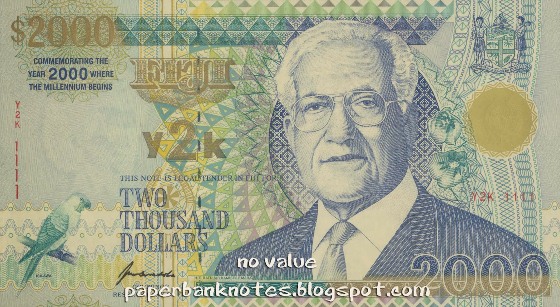
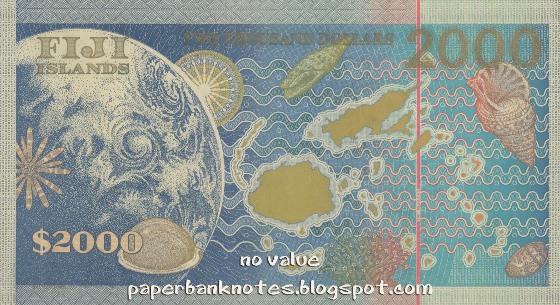
This absolutely beautiful note was issued by the Reserve Bank of Fiji in 1999 to commemorate the new Milennium. Fiji was then, in the year 2000, the first country to see the new Millennium (now it would be Western Samoa). This note was issued as a lot of just 2000 pieces and sold at a premium. The current highest denomination in Fiji is 100 dollar so this banknote, though official legal tender, won't have seen much circulation.
On the back of the note we can see a stunning image of our planet as seen from space.
(Images from paperbanknotes.blogspot.com)
West African States - 10,000 francs - 2003 - pick nr. differs by country
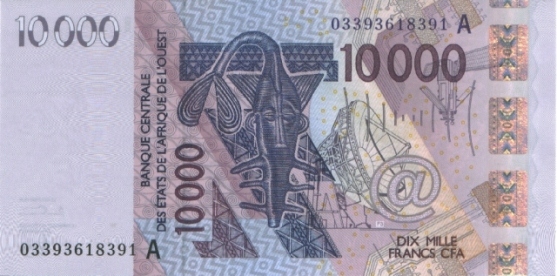

This 10,000 francs banknote from the West African States is issued in Ivory Coast, Benin, Burkina Faso, Mali, Niger, Senegal, Togo and Guinea-Bissau. The notes in this 2003 series all have different themes. This highest denomination has telecommunication as its theme which is symbolised by images of a satellite and a satellite dish.
United States of America - 5/10/25/50 cents - 1969 - PM75/PM76/PM77/PM78
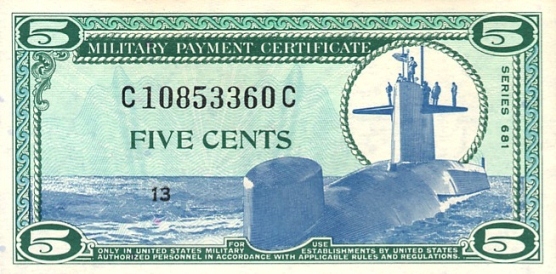
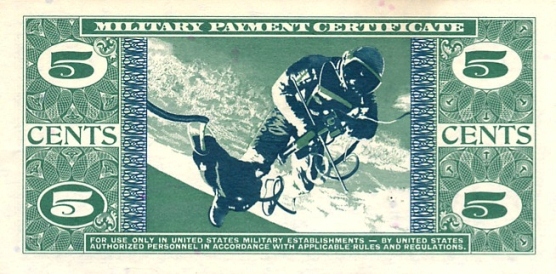
Military payment certificates, or MPC, was a form of currency used to pay U.S. military personnel in certain foreign countries. It was used in one area or another from a few months after the end of World War II until a few months after the end of U.S. participation in the Vietnam War, from 1946 until 1973.
Thirteen series of MPC were issued between 1946 and 1973, with varied designs often compared to Monopoly money due to their colors. After the official end of U.S. participation in the Vietnam War in early 1973, the only place where MPC remained in use was South Korea. In autumn of 1973, a surprise conversion day was held there, retiring MPC and substituting greenbacks. MPC was never again issued, and the concept lay dormant until the late 1990s, when it was revived somewhat in the form of a Stored Value Card system, used by U.S. armed forces in Iraq.
This series from 1969 show an astronaut on the back of the notes conducting a spacewalk above planet Earth. The first spacewalk by an American astronaut was done in 1965 by Ed White, about three months after kosmonaut Alexey Leonov performed the very first spacewalk ever.
You can see the rest of the notes after the click:
United Kingdom - 1 pound - 1978-1984 - P377
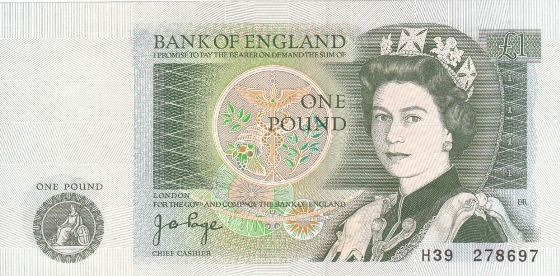
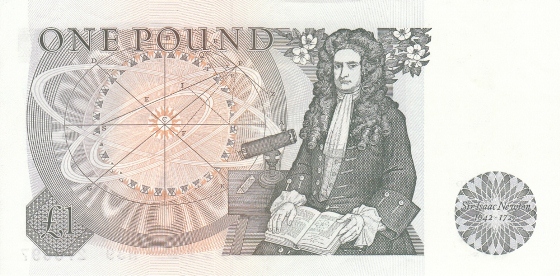
The back of this 1 pound note from the United Kingdom shows one of the most famous scientists of all time: Sir Isaac Newton (1642-1727). He was a physicist and mathematician and a key figure in the scientific revolution. His book Philosophiæ Naturalis Principia Mathematica ("Mathematical Principles of Natural Philosophy"), first published in 1687, laid the foundations for most of classical mechanics. Newton's Principia formulated the laws of motion and universal gravitation that dominated scientists' view of the physical universe for the next three centuries. It also demonstrated that the motion of objects on the Earth and that of celestial bodies could be described by the same principles. By deriving Kepler's laws of planetary motion from his mathematical description of gravity, Newton removed the last doubts about the validity of the heliocentric model of the cosmos. Newton built the first practical reflecting telescope. Besides his scientific career he also served the British government as Warden and Master of the Royal Mint.
The back of this fine note shows Newton next to an image of a heliocentric solar system. We can also see his telescope.
Turkey - 5 lira - 2009 - P222
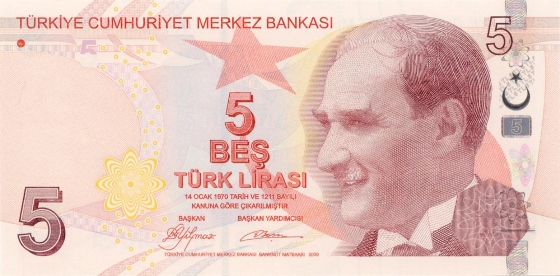
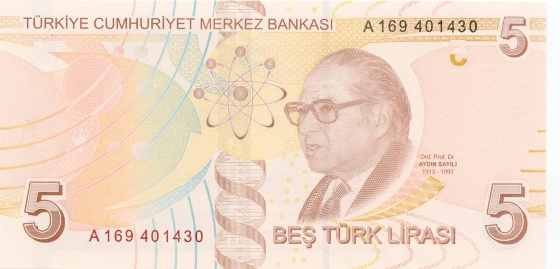
The front of this notes depicts, like all Turkish notes, President Mustafa Kemal Atatürk (1881-1938). The reverse shows Prof. Dr. Aydin Sayili (1913-1993) along with diagrams of the solar system, symbols of an atom and DNA. Sayili was a Turkish historian of science. He was interested in many areas of science history, mainly the history of astronomy and conducted unique studies in this field. In 1960 he published his masterpiece "Observatory in Islam and Its General Place in the History of the Observatory".